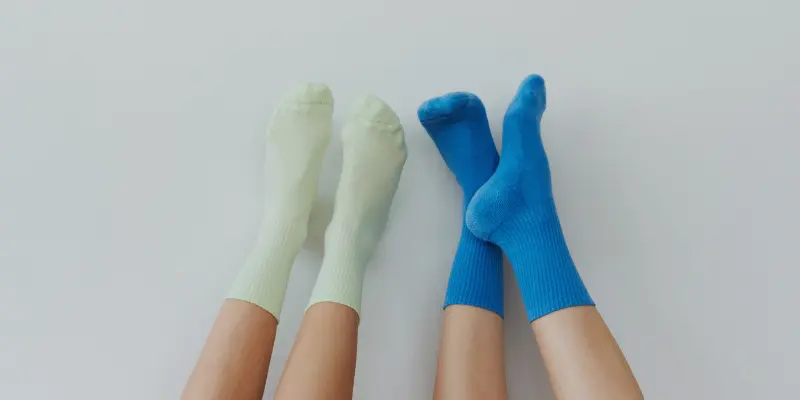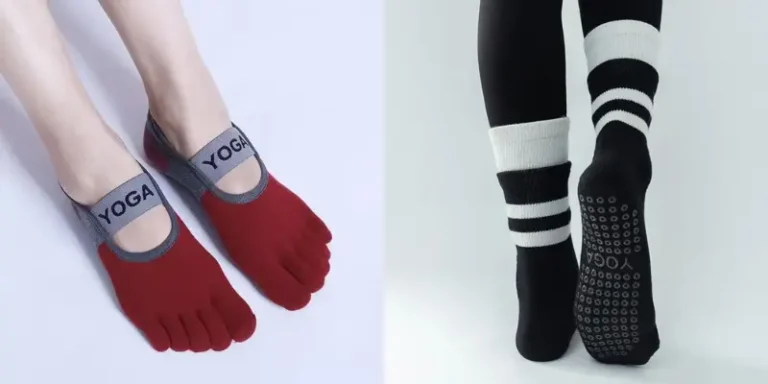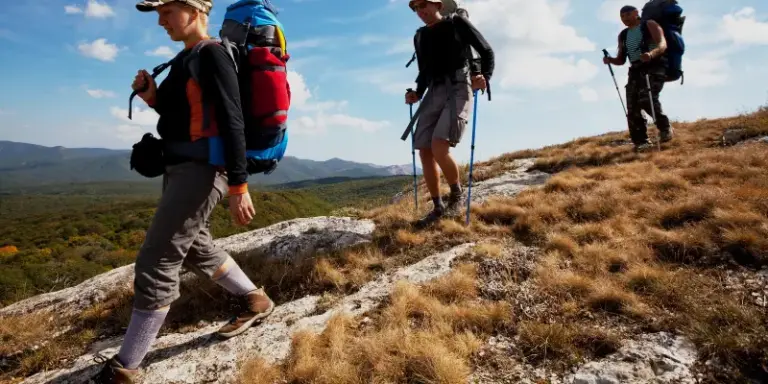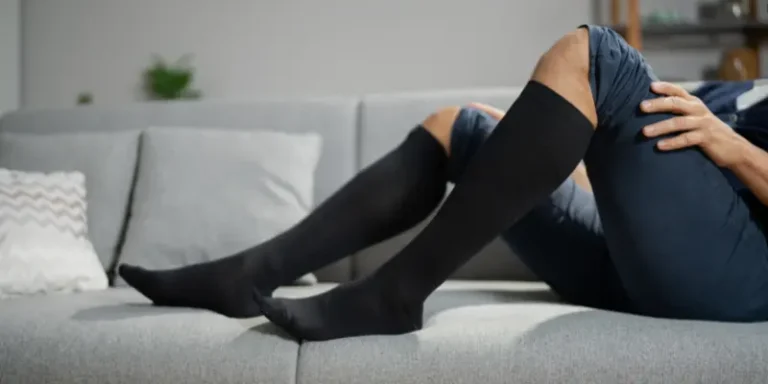The History and Evolution of Grip Socks Explained
Sock fans might be surprised to find out that grip socks have been around since ancient times. Silk woven socks were found in a 2nd-century BCE tomb in China. This shows that people have always wanted special footwear.
In the Middle Ages, socks were a sign of wealth for the nobility. By AD 1000, some people even wore socks with fancy designs.
The introduction of a knitting machine in 1589 marked a significant turning point. It made making socks six times faster. This led to more people being able to afford socks.
Over time, socks have changed a lot. They went from simple animal skin to the many materials and styles we see today. This includes grip socks for sports and fitness.
Key Takeaways
- Socks have been around for centuries, with the earliest versions made from animal skins and matted hair.
- The invention of the knitting machine in 1589 revolutionized sock production, allowing for faster and more efficient manufacturing.
- Specialized grip socks, designed for activities like yoga, Pilates, and barre, have become increasingly popular in recent years.
- Socks can now be made from a variety of materials, including cotton, wool, nylon, acrylic, polyester, and olefins.
- The history and evolution of grip socks reflects the ongoing innovation and adaptation of this essential piece of clothing.
The Origins of Grip Socks
The story of grip socks goes way back to the first shoes. In ancient times, people used animal skins to cover their feet, much like the Greek and Roman carbatinae shoes. By the 8th century BC, the Ancient Greeks had socks called piloi, made from animal hair.
The Romans also used leather or fabric to cover their feet. By the 2nd century AD, they made these into fitted socks called udones.
Ancient Footwear: From Animal Skins to Primitive Socks
In Europe, by the 5th century AD, individuals of religious significance were known to wear socks known as puttees. These early socks were the start of today’s grip socks. They help prevent slipping during activities like yoga, Pilates, barre, and other workout routines.
- The earliest socks were made from animal skins, similar to the Greek and Roman carbatinae shoes.
- In the 8th century BC, the Ancient Greeks utilized a type of footwear known as piloi, which were crafted from matted animal hair and functioned as rudimentary socks.
- The Romans used leather or fabric for their feet, and by the 2nd century AD, they sewed these together for fitted socks called udones.
- In the 5th century AD, a type of sock known as puttees gained popularity among revered individuals in Europe as a symbol of purity.
These early socks led to the modern non-slip, toeless grip, sticky, skid-resistant, and anti-slip workout socks we use today in sports and fitness.
Technological Advancements in Sock Manufacturing
The story of grip socks has grown thanks to big changes in making socks. In 1589, the knitting machine was invented, making socks much faster to make. This was a big step towards making socks for everyone.
Then, in 1938, nylon came along, changing how socks were made. Now, socks can be made from many materials like cotton, wool, and nylon. This has led to the creation of special socks for different sports and activities.
Companies like Naigai Co., Ltd., started in 1920, have been key in these changes. They focus on making socks that are both comfy and last a long time. They use new techniques like NDX rubber yarn and three-dimensional knitting.
These new ideas have made socks better and opened up new possibilities. As people want more special socks, we can expect even more new ideas. This will help athletes, fitness lovers, and anyone who wants better socks.
The History and Evolution of Grip Socks
The Rise of Non-Slip Socks: From Slippers to Workout Essentials
The story of grip socks goes way back to the first socks made from animal skins and early fabrics. Over time, socks have changed a lot because of new technology in making them. The 16th century saw the start of knitting machines, and the 20th century brought synthetic materials like nylon into the picture.
Recently, non-slip or grip socks have become very popular. These socks help you grip better and prevent slipping. They’re perfect for sports and fitness like yoga, Pilates, and barre. With toeless designs, sticky surfaces, and skid-resistant soles, they help you stay steady during workouts.
- The first sock, known as “piloi,” dates back to around the 8th Century BC and has been used over many centuries.
- Ancient Egypt recorded the first actual knit socks between 300-500 AD.
- The invention of the knitting machine by William Lee in 1589 revolutionized sock production, making it faster and more efficient.
- In 1938, nylon was introduced as a material for making socks, leading to mass production due to its stretchiness and ease of manufacture.
Now, grip socks are a big hit in sports, especially for athletes in football. They’re also popular for yoga, Pilates, and barre. These socks have changed how we do fitness and exercise, giving us better support and stability for many activities.
Conclusion
The story of grip socks is truly fascinating. It shows how socks have changed from simple animal skins to today’s high-tech non-slip ones. These changes are thanks to innovations in manufacturing and the need for specialized socks.
Now, grip socks are key for many sports and fitness activities. They give you better grip and stability to avoid slipping. As people want better gear, we’ll likely see more improvements in grip sock technology. This means we can enjoy our sports and fitness with more confidence and safety.
The future of grip socks looks bright, filled with more innovation and technology. Whether you love yoga, Pilates, or just need non-slip socks, the latest advancements will change how we stay active. They will help us keep our balance during workouts and activities.
For the ultimate Grip Sock shopping experience, make sure to check out our store!








